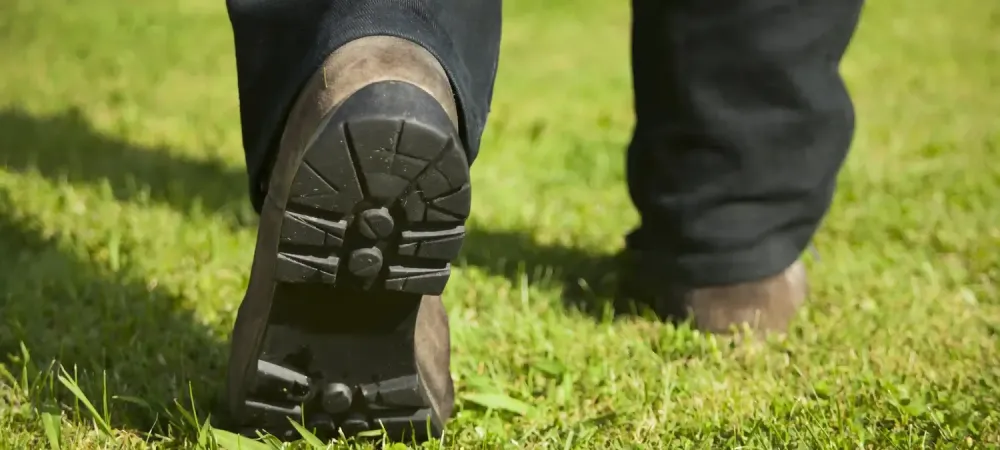Best Late Summer Landscaping Tips for a Healthier Yard This Fall

Late summer might feel like the end of the season—but for your landscape, it’s one of the most important times of the year. The choices you make in August and early September determine whether your lawn and garden bounce back beautifully in fall or limp into dormancy stressed and bare.
If your lawn looks tired, your shrubs are wilting, or your flower beds have lost their spark, now’s the time to take action. These expert late summer landscaping tips will help your yard recover from summer stress and thrive well into autumn.
Quick Answer: What Should You Focus on in Late Summer?
Prioritize deep watering, pruning overgrowth, overseeding thin spots, and soil testing to reset your lawn and landscape for a healthier fall. These strategies help Indiana homeowners reverse drought damage, prep for fall growth, and minimize winter lawn issues.
Why Late Summer Landscaping Matters
Landscaping isn’t just a spring or fall job. In Indiana, cool-season grasses like fescue and bluegrass begin preparing for their strongest growth phase as temperatures cool in late summer. But if your lawn is compacted, dried out, or nutrient-depleted, you’re limiting that rebound.
Late summer is also your last real window to:
- Repair drought damage and dead spots
- Cut back overgrown or diseased plants
- Set the stage for fall seeding or fertilization
Allowing summer stress to linger too long into September means you're missing the optimal recovery window. A bit of strategic work now ensures fewer issues during the fall and a smoother start next spring.
How to Deep Water and Conserve Moisture
Deep watering is about more than just turning on the hose. Most Indiana lawns and landscapes need 1 to 1.5 inches of water per week, delivered early in the morning to minimize evaporation and fungal risk.
Use drip irrigation or soaker hoses for garden beds and trees to direct water into the root zone. For lawns, use a rain gauge or shallow dish to track your output. A deep soak twice per week beats daily surface-level watering.
To help retain moisture:
- Add 2 to 3 inches of organic mulch around trees, shrubs, and beds.
- Avoid watering in the middle of the day or after dark.
- Check irrigation systems for clogs or leaks—especially if certain areas are drying out.
Pruning & Cleanup Guide
Trimming and cleaning up in late summer can improve both health and appearance, but it must be done strategically.
- Deadhead flowers and cut back annuals that are finished blooming. This clears space for fall color and prevents rot.
- Prune shrubs only after blooming ends, and skip pruning anything that flowers in early spring (like lilacs or forsythia).
- Remove leaf litter and fallen debris from beds to prevent fungal diseases from taking hold as humidity levels spike.
- Cut ornamental grasses back by one-third if they’ve become unruly—this stimulates denser fall growth without exposing roots.
If you're unsure what to prune or when, it's safer to wait or call a landscaping professional than risk cutting something at the wrong time.
Overseeding vs. Sod: What’s the Right Fix?
If your lawn has bare spots or looks thin after a hot Indiana summer, you have two solid options: overseeding or sod patching. Each comes with trade-offs, depending on your budget, time frame, and lawn goals.
Overseeding is a more cost-effective option and works well for larger areas that require thickening. It takes about 4–6 weeks to establish, but allows you to improve your existing lawn without starting from scratch. This option is best suited for fescue and bluegrass lawns, especially when working with thin patches across a wide area.
Sod patching, on the other hand, provides instant results and is ideal for small, heavily damaged, or high-traffic areas—like pathways or pet zones. It’s more expensive, but it can quickly fix compacted or bare spots where seeds struggle to take hold.
In Indiana, late August to mid-September is the ideal window for overseeding. Warm soil and cooler air temperatures create perfect germination conditions. For optimal results, use a fast-germinating seed blend specifically designed for clay-heavy soils, which are typical in central Indiana.
Soil Testing and Amendment Tips
If your yard struggles year after year, the issue may lie underground. Soil testing reveals nutrient imbalances, pH issues, and compaction—factors that no amount of watering or mowing can fix alone.
Here’s how to get started:
- Take samples from 4 to 6 different spots in your yard, digging a few inches deep.
- Most Indiana lawns thrive with a pH of 6.0 to 7.0. If it’s too low, add lime; if it's too high, amend with sulfur.
- Mix compost into beds or lawn areas before seeding or fertilizing to improve structure and nutrient content.
Local extension services or garden centers often provide affordable testing kits with turnaround times under two weeks.
Preventive Landscaping Tips That Pay Off Later
Landscaping smart in late summer isn’t just about aesthetics—it’s about prevention. A few small changes now can save you from major issues next season.
- Install clean edging between the lawn and beds to reduce grass creep and mower damage.
- Rotate annual plantings to avoid disease buildup in soil (especially in raised beds or planters).
- Apply fall pre-emergents in September to stop winter weeds like henbit and chickweed from sprouting.
- Inspect your irrigation system for broken heads or clogged emitters—hidden inefficiencies can lead to dry zones.
When to Call a Professional Landscaper
Some landscaping tasks are straightforward. Others—like diagnosing soil issues, identifying plants, or executing a full lawn renovation—require a trained eye and specialized equipment.
You may want to call a pro if:
- You're unsure what or when to prune
- Your lawn is too patchy for DIY overseeding
- You’re planning a bed redesign or seasonal planting
- You’ve tested your soil, and the pH or compaction issues persist
If you're looking for help across Indiana, NatureScape Services provides expert lawn care and landscaping services tailored to our unique climate and soil types.
Need a healthier lawn and landscape before fall?
Contact NatureScape Services to schedule a free consultation. We’ll help you take the proper steps now—so your yard thrives in the season ahead.
FAQ: Common Late Summer Landscaping Questions
How deep should I water shrubs in late summer?
Aim to water 6 to 8 inches deep into the root zone, twice a week, depending on weather and soil type.
How do I prepare my central Indiana yard for fall color with minimal water use?
Focus on deep watering early in the day, use drought-tolerant perennials, and mulch heavily to retain moisture.
What’s the ideal mulch depth to prevent drought stress?
Maintain 2 to 3 inches of organic mulch, like shredded bark or compost, and refresh annually.
When is the best time to overseed a bluegrass lawn in Indiana?
Late August through mid-September is ideal. Soil is still warm, and cooling temps support healthy germination without summer stress.
Which fast-germinating perennial seeds work best for overseeding in Indiana clay soils?
Look for tall fescue blends or perennial ryegrass formulated for heavy soils—they germinate quickly and handle wear.
